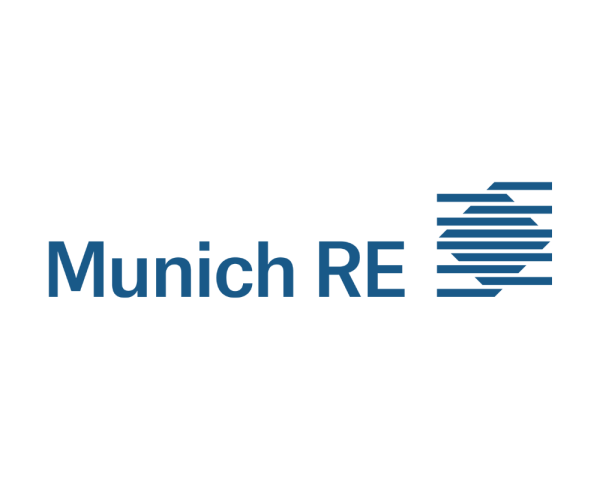In specialty insurance, software alone can't ensure efficiency, accurate decision-making, and steady business growth. The systems that win are those that deftly balance automation with human touch.
Specialty lines are not a natural fit for wide automation. Their complex perils, bespoke coverage terms, and one-off claim scenarios by design demand human judgment and oversight. For years, carriers have been striving to move standardizable parts of their workflows to digital rails. But the fact that we're still having deep conversations about automating specialty insurance indicates that out-of-the-box tools haven't totally succeeded and that few reusable best practices for custom buildups exist.
Yet the pressure to automate is mounting. In a landscape where artificial intelligence (AI) developments are outpacing specialty operating models and exposures are evolving faster than line-specific product backlog, you can no longer afford to rely heavily on manual routines. Insurers are aware of the gaps and are rushing to seize the opportunities unlocked by new technology, with 74% placing digital transformation highest on their 2025 strategic agenda. For many chief information officers and chief technology officers I work with, the question today isn't whether to automate, but how to do this right, without compromising critical aspects and waiting another three to five years to see meaningful results.
From my experience with specialty insurers globally, I've learned four dangerous automation pitfalls — often invisible from the outset and costly to escape from. Whether you're deploying point tools or setting out a broad transformation, here are the mistakes you'll want to avoid.
Mistake 1. Underestimating Software Flexibility Needs
Flexibility is the foundational requirement for specialty insurance automation systems. Yet this is often the first thing compromised in the pursuit of fast go-lives and cheap prebuilt workflows. The results are sadly consistent: quick but short-lived automation benefits, high cost of change, and frustrated people who have to revert to manual routines.
The primary reason to prioritize flexibility is that you don't yet know what you'll need to automate next. New risks, products, distribution models, technology — all of these will entail changes to your operational rules and software. Think of how fast-evolving cyber exposures made basic IT hygiene checks that were sufficient three years ago — and the actuarial frameworks layered on them — somewhat obsolete. Or how recent shifts in climate patterns and the rise of parametric models have changed underwriting and payouts in marine, aviation, and agricultural lines. Any legacy systems that failed to adapt basically lost their edge.
The need for flexibility becomes even more urgent when you consider regulatory volatility. An automation system must rapidly accommodate every evolving rule, from jurisdiction-specific Anti-Money Laundering and Countering the Financing of Terrorism (AML/CFT) demands to new reporting standards in specialty finance lines. If changes require extensive coding, you risk violating compliance before fixes in your solution even materialize.
While you can't foresee everything, you can employ an automation solution that assumes change is coming and allows iterative enhancements. Flexible software will let you not just upgrade what you already do but amplify innovation and future-proof your operations.
Here's what securing that flexibility means in practice:
• Hardcoding is out of the question. Business users, not just IT teams, should be able to modify automation logic on the fly. For example, in one aviation insurance software project, an underwriting engine was built where risk engineers could adjust, test, and deploy risk rating and quoting rules mid-cycle without involving developers. This capability ensured quick response to regulatory shifts and emerging risk factors that rapidly altered customers' exposure profiles.
• If you're building a custom solution — like many organizations do, precisely because off-the-shelf tools fail to accommodate specialty insurance nuances — prioritize modular architecture. It can be service-oriented architecture, microservices, or a modular monolith. Modularity will let you design automation around isolated functions (quoting, binding, policy servicing, and so on), evolve each component independently, and easily add new features. Lack of modular architecture may stall feature rollouts for months, which is a quick route to losing a competitive edge in specialty's fast-shifting tech landscape.
• Your automation system must not only connect to data sources you currently use for know your customer processes, underwriting, and claim adjudication but also support smooth integration with new and emerging ones. This is becoming critical as alternative feeds like Internet of Things-enabled data from sensors, drones, and satellites take on a central role in specialty risk assessment. For custom systems, interoperability can be maximized via an application programming interface (API)-first approach, where you plan software around integrations from the ground up. The resulting solution is modular and easy to evolve by design. If you're implementing a ready-made tool, make sure it offers built-in extensibility for future integrations.
Mistake 2. Overrelying on Intelligent Automation
Some of the insurers I talked to believe that AI will soon unlock full automation for specialty products. The rise of generative and agentic AI gave even more hope that we can have specialty automated in a straight-through way, much like personal lines. Studies claim that 99% of insurers around the world are already investing or planning to invest in GenAI, even though 60% of firms haven't yet developed a sharp return on investment model for the technology.
AI does have clear, high-value use cases in specialty insurance. It offers five to 50 times speed gains in data-rich, high-volume scenarios that require quick action, like application processing or claim validation and triaging. Machine learning-supported analytics have proven more than 95% accuracy in dynamically mapping risks, predicting financial performance, and surfacing exposures across complex specialty portfolios. Generative AI came to automate the most time-intensive routines, such as reviewing 100-page submissions, compiling insights, crafting bespoke documents, and delivering basic customer advice. Frontrunners report more than twofold growth in employee productivity and an up to 6% increase in revenue.
But I have to disappoint you: AI, however powerful, can't automate specialty insurance end-to-end.
The reason is the inherent limitations of the tech's predictive, reasoning, and creative scope. Intelligent models draw on historical and current data, meaning that however crafty they are at extrapolating patterns and ideating, they cannot anticipate unprecedented risks and effectively navigate unique context. This makes AI unfeasible as an autonomous decision-maker in novel, low-data environments and "gray zones" with special arrangements — the specialty lines' everyday settings.
Take specialty claim adjudication in multi-tiered areas like aviation liability or marine cargo. AI tools could automatically process claim evidence, spot forged submissions, summarize investigation results, and suggest optimal settlement paths. But human judgement, negotiation, and context-aware decision making remain critical for accurate settlement.
When it comes to underwriting, AI may struggle to predict and score exposures that fall outside historical precedent, like the new energy technology's risks in environmental liability or war-on-terror exclusions in political risk coverage. Similarly, for actuarial modeling, no model can reliably replace expert judgment in niche or emerging segments (think intellectual property insurance or space launch coverage), where actuarial baselines don't yet exist. By trusting specialty actuarial and underwriting decisions to your intelligent solution, you may take more risk than opportunity.
When it comes to generative AI, data analytics experts highlight that it's really strong at summarizing information, reasoning, and concluding. At the same time, the non-deterministic structure of generative AI algorithms makes it hard to achieve repeatable results. In practice, it means that tasks like synthesizing underwriting summaries or claims reports may yield slightly different outputs each time, even when the input data remains unchanged. Combining generative AI with machine learning and independent assessment models drastically enhances consistency, but you'll still need a human in the loop to validate the insights.
Not to mention that AI-fueled automation doesn't guarantee value and, in some scenarios, may lose on cost-benefit to traditional approaches. For one aviation insurer, an underwriting system built on rule-based engines and statistical algorithms, with no AI involved to score risks or compose quotes, delivered accuracy comparable to intelligent models but with better transparency, flexibility, and at a lower cost. The resulting software succeeded because it precisely matched the real business needs.
Mistake 3. Treating Data as a Secondary Success Factor
Too often, insurers approach automation as a purely software play and treat the data that fuels digital operations as a secondary aspect. But like any bad fuel, poor data corrodes everything it touches. And it's inherently easy to misfuel your engine in specialty insurance, where data doesn't come from plug-and-play sources and is rarely standardized.
For advanced analytics and AI, the stakes are even higher. If the data used for model training is inconsistent or lacks depth, the AI solution may miss critical risk signals, overlook fraud, and reinforce biases. In agentic AI, anchoring models on proprietary expertise can become a huge competitive advantage, but that's only possible if your knowledge is well-organized and accessible at scale.
What do you actually need to build strong data foundations?
• Data discipline starts with a robust data governance strategy, which includes defining secure, controlled pipelines and clear standards for data quality, storage, and processing tiers. You also need to map which data can support which decisions, at what levels, and under what conditions. The map lays the basis for a resilient data architecture where new data sources can be seamlessly onboarded into a standardized, governed framework.
• Checking data for duplicates, missing values, and formatting errors and enriching it at ingestion is a must to ensure accurate entries. Data engineers use data integration tools like Azure Data Factory and AWS Glue to automate validation and cleansing routines at scale.
• Consider intelligent image analysis and natural language processing tools to automatically extract and normalize data from unstructured inputs. There are pre-built options, but custom pipelines and algorithms trained specifically on specialty insurance concepts would offer more accurate parsing and classification for your niche use cases.
• To maintain consistent data formats, apply profile and document templates, enforce standard taxonomies for specialty insurance risk classes, and define unified data inputs and outputs across automated processing workflows.
• Implement centralized, scalable data storages to avoid data silos that hamper automation accuracy and speed. Dedicated repositories benefit specialty insurers from both data accessibility and cost standpoints. For example, you might employ a cloud data lake to store raw risk feeds and insured documents and use a data warehouse for structured data like policy records and claim histories.
• Use database indexing. It is crucial for smooth structured data retrieval operations. In one recent engagement, a managing general agent faced errors and delays in automated report generation. Optimizing and indexing the software's underlying database eliminated accuracy issues and introduced up to 75 times quicker reporting. For another specialty insurance client, database restructuring doubled claim processing efficiency..
The quality of third-party data that feeds automation — think your satellite imagery for agricultural products or telematics for fleet lines — matters a lot. Prioritize reputable data vendors who provide up-to-date datasets backed by clear documentation and offer flexible data integration options (APIs, direct feeds). Also, check for contingency: The vendor must maintain robust backup mechanisms to prevent data delivery disruptions.
You also need the ability to trace every data point used for automation to its origin. This helps you establish auditable data-driven workflows, quickly isolate errors, and achieve explainability in specialty AI models. Popular data integration platforms provide go-to lineage capabilities and allow building tailored metadata logging components into data pipelines.
Mistake 4. Neglecting the Human Take
Specialty insurers often pride themselves on human expertise, and rightly so. Which makes it all the more surprising to me why some embark on automation projects with minimal input from the people who actually carry the knowledge: actuarial, underwriting, and claim experts.
Without involving domain subject matter experts, you risk missing workflow specifics, subtle productivity blockers, non-apparent risk factors, and other contextual nuances critical for a winning automation system design. As a specialty insurance IT consultant, I know firsthand that no automation vendor can intuit these things. Worse, software planned out of touch with business users can lose its credibility at the door, which will inevitably hamper adoption.
I've seen the most impressive automation outcomes where organizations brought subject matter experts in from the start. For example, in one portal development project for a specialty managing general agent, teams worked directly with the underwriters and claims specialists whose data entry routines were to be partially moved to the customer and broker side to alleviate the workload. They involved them in planning portal features, validating automation rules, and testing ready components. Doing this helped optimize portal design, secure logic accuracy, and, most importantly, ensure the delivered functionality eliminates the teams' real operating issues. The result was both more efficient servicing workflows and higher satisfaction of the managing general agent's customers.
Change management is another area where employee participation brings much value. Before any software is rolled out, you need to map, challenge, and optimize every business process subject to automation. Otherwise, you're just automating friction. Engaging specialty insurance teams will help you surface hidden bottlenecks and design workflows for higher efficiency in real-world and digital settings. This move also fosters ownership and enhances employee trust in technology, which is critical for adoption.
Automation is no longer optional in specialty insurance, but it's not a cure-all either. The organizations that thrive will be the ones that treat automation as part of a broad business rewiring, align technology with real operational needs, and respect the irreplaceable value of human expertise. Getting all that right from day one will help you position for efficiency and sustainable growth despite increasing domain complexity.
Contributors: Stacy Dubovik, financial technology researcher, ScienceSoft; Alex Bekker, AI & data management expert, ScienceSoft.























